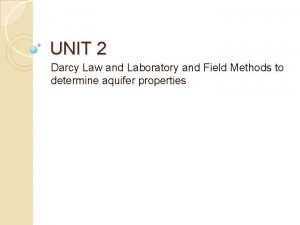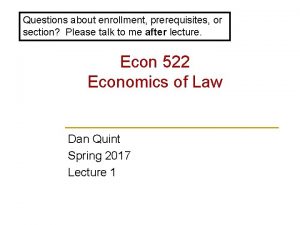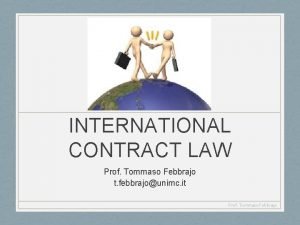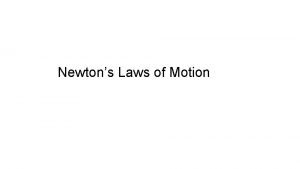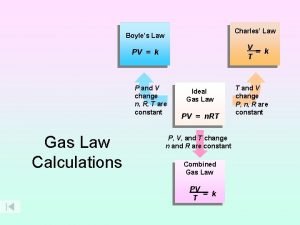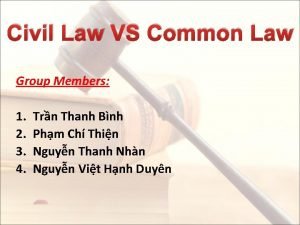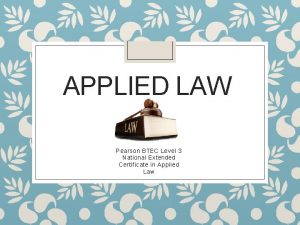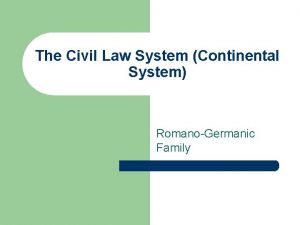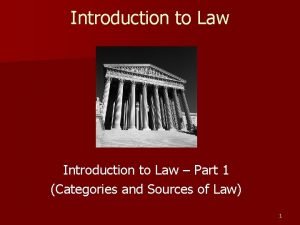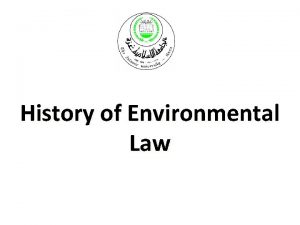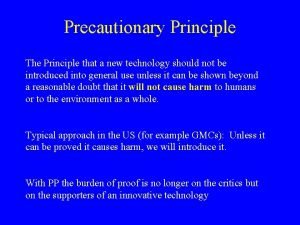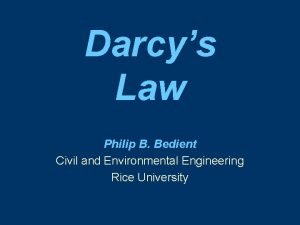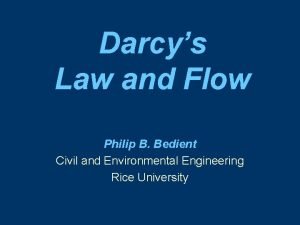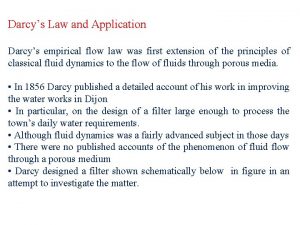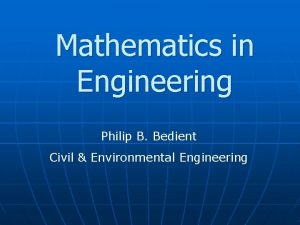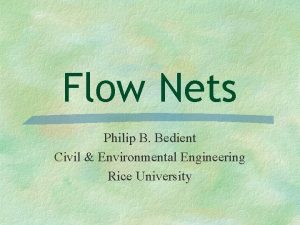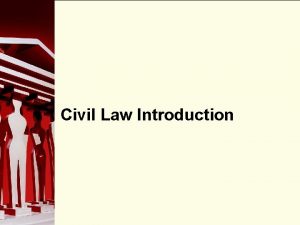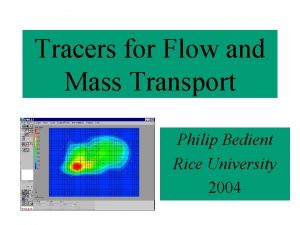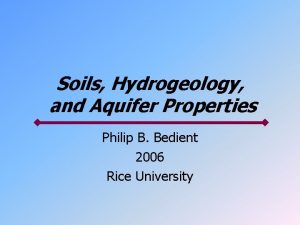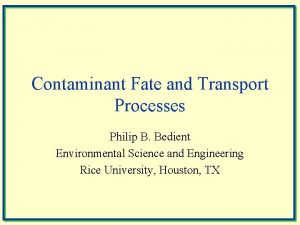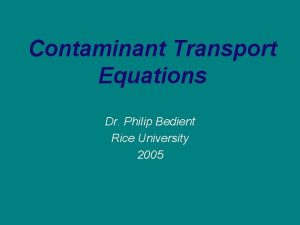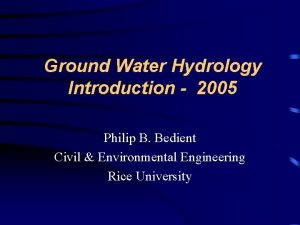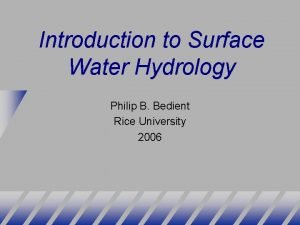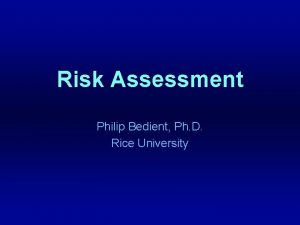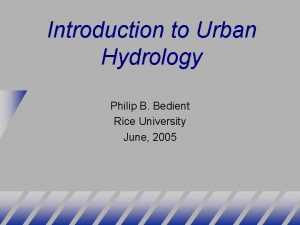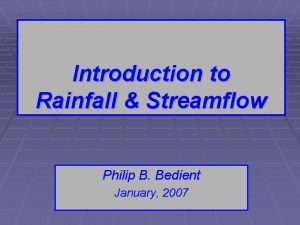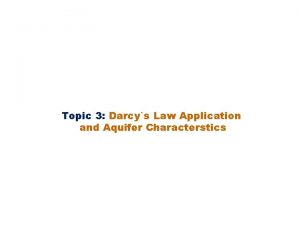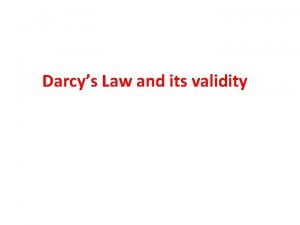Darcys Law Philip B Bedient Civil and Environmental

Darcy’s Law Philip B. Bedient Civil and Environmental Engineering Rice University

Darcy’s Law • Darcy’s law provides an accurate description of the flow of ground water in almost all hydrogeologic environments.

Darcy’s Law • Henri Darcy established empirically that the flux of water through a permeable formation is proportional to the distance between top and bottom of the soil column. The constant of proportionality is called the hydraulic conductivity (K). V = Q/A, v –∆h, and v 1/∆L

Hydraulic Conductivity • K represents a measure of the ability for flow through porous media: • K is highest for gravels - 0. 1 to 1 cm/sec • K is high for sands - 10 -2 to 10 -3 cm/sec • K is moderate for silts - 10 -4 to 10 -5 cm/sec • K is lowest for clays - 10 -7 to 10 -9 cm/sec

Darcy’s Experimental Setup: Head loss h 1 - h 2 determines flow rate

Darcy’s Law • Therefore, • V = – K (∆h/∆L) and since Q= VA Q= – KA(dh/d. L)

Conditions • In General, Darcy’s Law holds for: 1. 2. 3. 4. Saturated flow and unsaturated flow Steady-state and transient flow Flow in aquifers and aquitards Flow in homogeneous and heteogeneous systems 5. Flow in isotropic or anisotropic media 6. Flow in rocks and granular media

Darcy Velocity • V is the specific discharge (�Darcy velocity). • (–) indicates that V occurs in the direction of the decreasing head. • Specific discharge has units of velocity. • The specific discharge is a macroscopic concept, and is easily measured. It should be noted that Darcy’s velocity is different ….

Darcy Velocity • . . . from the microscopic velocities associated with the actual paths if individual particles of water as they wind their way through the grains of sand. • The microscopic velocities are real, but are probably impossible to measure.

Darcy & Seepage Velocity • Darcy velocity is a fictitious velocity since it assumes that flow occurs across the entire cross-section of the soil sample. Flow actually takes place only through interconnected pore channels.

Darcy & Seepage Velocity • From the Continuity Eqn: • Q = A v. D = A V V s – Where: Q = flow rate A = cross-sectional area of material AV= area of voids Vs = seepage velocity v. D= Darcy velocity

Darcy & Seepage Velocity • Therefore: VS = VD ( A/AV) • Multiplying both sides by the length of the medium (L) VS = VD ( AL / AVL ) = VD ( VT / VV ) • Where: VT = total volume VV = void volume • By Definition, Vv / VT = n, the soil porosity • Thus VS = VD/n

Equations of Ground Water Flow • Description of ground water flow is based on: 1. Darcy’s Law 2. Continuity Equation - describes conservation of fluid mass during flow through a porous medium; results in a partial differential equation of flow.

Example of Darcy’s Law • A confined aquifer has a source of recharge. • K for the aquifer is 50 m/day, and n is 0. 2. • The piezometric head in two wells 1000 m apart is 55 m and 50 m respectively, from a common datum. • The average thickness of the aquifer is 30 m, and the average width is 5 km.

Calculate: • a) the rate of flow through the aquifer • (b) the time of travel from the head of the aquifer to a point 4 km downstream • *assume no dispersion or diffusion

The solution • Cross-Sectional area= 30(5)(1000) = 15 x 104 m 2 • Hydraulic gradient = (55 -50)/1000 = 5 x 10 -3 • Rate of Flow for K = 50 m/day Q = (50 m/day) (75 x 101 m 2) = 37, 500 m 3/day • Darcy Velocity: V = Q/A = (37, 500 m 3/day) / (15 x 104 m 2) = 0. 25 m/day

And • Seepage Velocity: Vs = V/n = (0. 25) / (0. 2) = 1. 25 m/day (about 4. 1 ft/day) • Time to travel 4 km downstream: T = 4(1000 m) / (1. 25 m/day) = 3200 days or 8. 77 years • This example shows that water moves very slowly underground.

Limitations of the Darcian Approach 1. For Reynold’s Number, Re, > 10 where the flow is turbulent, as in the immediate vicinity of pumped wells. 2. Where water flows through extremely fine-grained materials (colloidal clay)

Darcy’s Law: Example 2 • A channel runs almost parallel to a river, and they are 2000 ft apart. • The water level in the river is at an elevation of 120 ft and 110 ft in the channel. • A pervious formation averaging 30 ft thick and with K of 0. 25 ft/hr joins them. • Determine the rate of seepage or flow from the river to the channel.

Confined Aquifer Confining Layer

Example 2 • Consider a 1 -ft length of river (and channel). Q = KA [(h 1 – h 2) / L] • Where: A = (30 x 1) = 30 ft 2 K = (0. 25 ft/hr) (24 hr/day) = 6 ft/day • Therefore, Q = [6 (30) (120 – 110)] / 2000 = 0. 9 ft 3/day/ft length = 0. 9 ft 2/day

Permeameters Constant Head Falling Head

Constant head Permeameter • Apply Darcy’s Law to find K: V/t = Q = KA(h/L) or: K = (VL) / (Ath) • Where: V = volume flowing in time t A = cross-sectional area of the sample L = length of sample h = constant head • t = time of flow

Darcy’s Law can be used to compute flow rate in almost any aquifer system where heads and areas are known from wells.
- Slides: 24
